Never Pay Full Price Again Tone King
All-time tube amps 2022: Boost your tone with our pick of the finest tube amps you can purchase right now
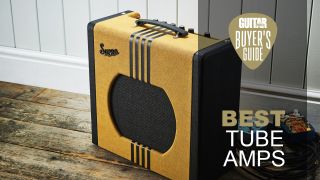
Who doesn't love a good tube amp? There's an almost primeval satisfaction in plugging your guitar into one of the best tube amps before striking a large open E chord. Bam!
And so, what is it nearly tube amps? Evidently, there'south the tone. It always sounds complex and organic, whether smooth, dark and rich, or make clean and sparkly. Then there's the feel; the fashion a tube amp interacts with your fingers as you coax notes from your strings, saturating the tone equally you lot dig in, cleaning it up every bit you lot back off.
Finally, at that place's the simplicity. Tube amps are rarely complex to use; oft at that place's just a couple of channels that you become to shape with half-a-dozen chicken-caput knobs, plus maybe some proper spring reverb. That's information technology. Oh, and naturally they take pedals really well.
Exercise you want to spend your time endlessly menu-diving with some needlessly complicated modelling amp? Or practise you value simplicity and authenticity? Take information technology from u.s.a., there's nothing like the existent thing.
With and then many tube amps out there, of all different shapes, sizes and power ratings, selecting the correct 1 can be a challenge. Fear not, though: with this guide, we're going to help you to cull the best tube amps for you.
Best tube amps: Our pinnacle picks
All of the amps in this best tube amps guide are outstanding in their own mode – and, of course, some are meliorate for specific genres than others. That said, the amp we keep coming back to again and once again is the sublime Mesa/Boogie California Tweed 6V6 four:40.
It looks absolutely fabulous and delivers out-of-this-globe tone, from sparkly Fenderish cleans to highly complex, saturated drive. The onboard Multi-Watt selector provides so many possibilities, massively broadening the California Tweed's scope. It'due south a fitting tribute to Leo Fender from Randall Smith; one that showcases both of their geniuses admirably.
Another amp nosotros're having trouble unplugging from is the ubiquitous Fender Blues Inferior Four . On paper, it shouldn't be able to compete with some of the expensive hand-wired exotica hither, withal we can't stop playing it. This uncomplicated, affordable little guitar amp is pop for a reason – it'southward an absolute please.
Best tube amps: Production guide

Mesa amps have a reputation for being circuitous monsters, and we dearest them for that. Loads of gain and lots of sliders, switches, knobs – you get the movie.
However, this stunning amp is a consummate departure. It's Randall Smith's homage to Leo Fender's amp designs of the 1950s – hence the 'Tweed' moniker. The story goes that when Randall started building Mesa/Boogie amps in the 1960s, he was heavily influenced by Leo's tweed circuits. He loved the organic-sounding voicings, and the way they smoothly transitioned from sparkly clean to distortion and dorsum again, which was partly down to their use of 6V6 tubes.
The California Tweed 6V6 4:forty is a delightfully simple amp, both to behold and to use. The uncluttered control panel features simply seven craven-caput knobs for gain, master, EQ, presence and reverb, plus a Multi-Watt selector, which alters the output from forty watts downwards to just ii. In that location'southward a normal input plus a make clean input, which is padded downward so that it doesn't drive the preamp as much for maximum headroom.
The Multi-Watt selector is fascinating because it offers much more than than merely the 5 power levels marked around the dial: 2W, 10W, 20W, 30W and 40W. For each selection, different circuits and operating classes are brought into play, offer different voicings and providing scope for endless tonal experimentation.
Simplistically, the 2W setting is perfect for loftier-gain sounds in a domicile setting, while clicking around to 40W will give you a ton of make clean headroom for your effects rig. However, the reality is much more nuanced and interesting than that.
Any setting you choose, Randall's California Tweed delivers on its hope of delicious 6V6 smoothness and dynamics. With its warm bottom end, crystal highs and long-tank leap reverb, it'll reward you with some of the best tones you lot'll always hear from your guitar.
The California Tweed is also bachelor as a head.
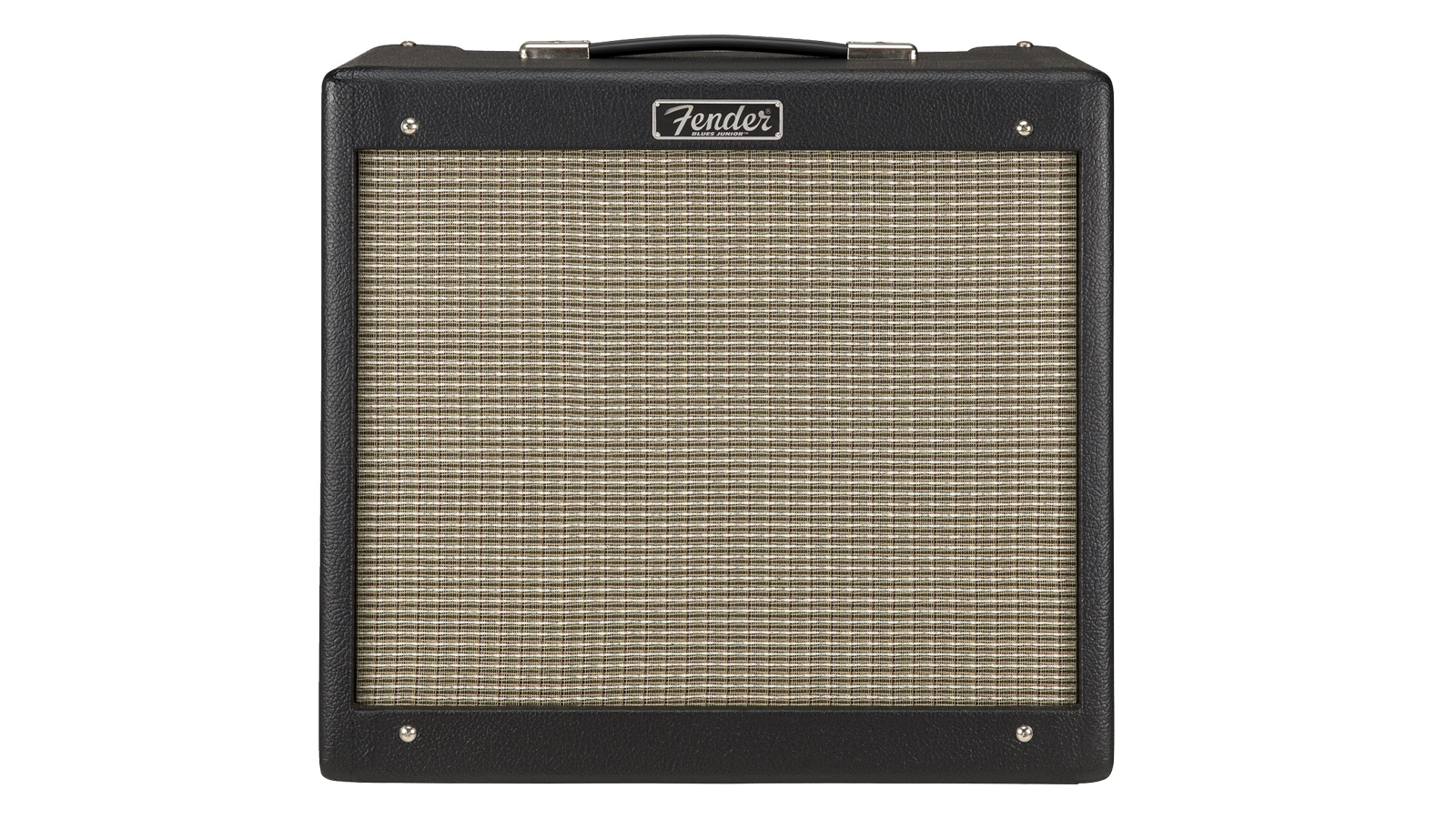
This amp's a right little devil. Provoke information technology and information technology'll spit scalding fire and brimstone, merely bankroll off a touch volition advantage you with the most gorgeous saturated tones, worthy of boutique amps many times the price.
It's wearing a Fender badge, so you tin too look the kind of make clean, sparkly tones that will always exist associated with Leo. In fact, this latest iteration, the IV, has been modded to provide more than headroom – a quality that was somewhat lacking in previous models.
The reworked preamp circuit also lends a creamier, more powerful tone beyond the lath. Lows have lost their flabbiness and the highs glister rather than pierce. Stomping on the Fatty switch now serves up mids beefier than a thick slice of sirloin.
The Blues Inferior Four'southward 12" Celestion A-Type speaker, famed for its sparkle at lower volumes and adored for its growl when driven, is an inspired choice. Still, if you prefer, yous can choose Fender's slightly more than expensive Blues Inferior Lacquered Tweed version, which is fitted with a more vintage-voiced Jensen speaker.
Awesome tone aside, a big part of the Dejection Junior IV's entreatment is its manageable size and weight, and affordable price. Few other amps of this size and cost can compete with its lineage, all-tube design and genuine spring reverb.
Downsides? If you lot're looking for a dwelling practice amp, and then exist warned that, despite its small size, the Blues Junior Four is a pretty loud bit of kit – perfect, in fact, miked upwardly for pocket-size gigs. Piddling amps can sound a bit 'boxy', simply this feisty Fender is no worse than any of its competitors in that respect.
Read the full Fender Blues Inferior IV review
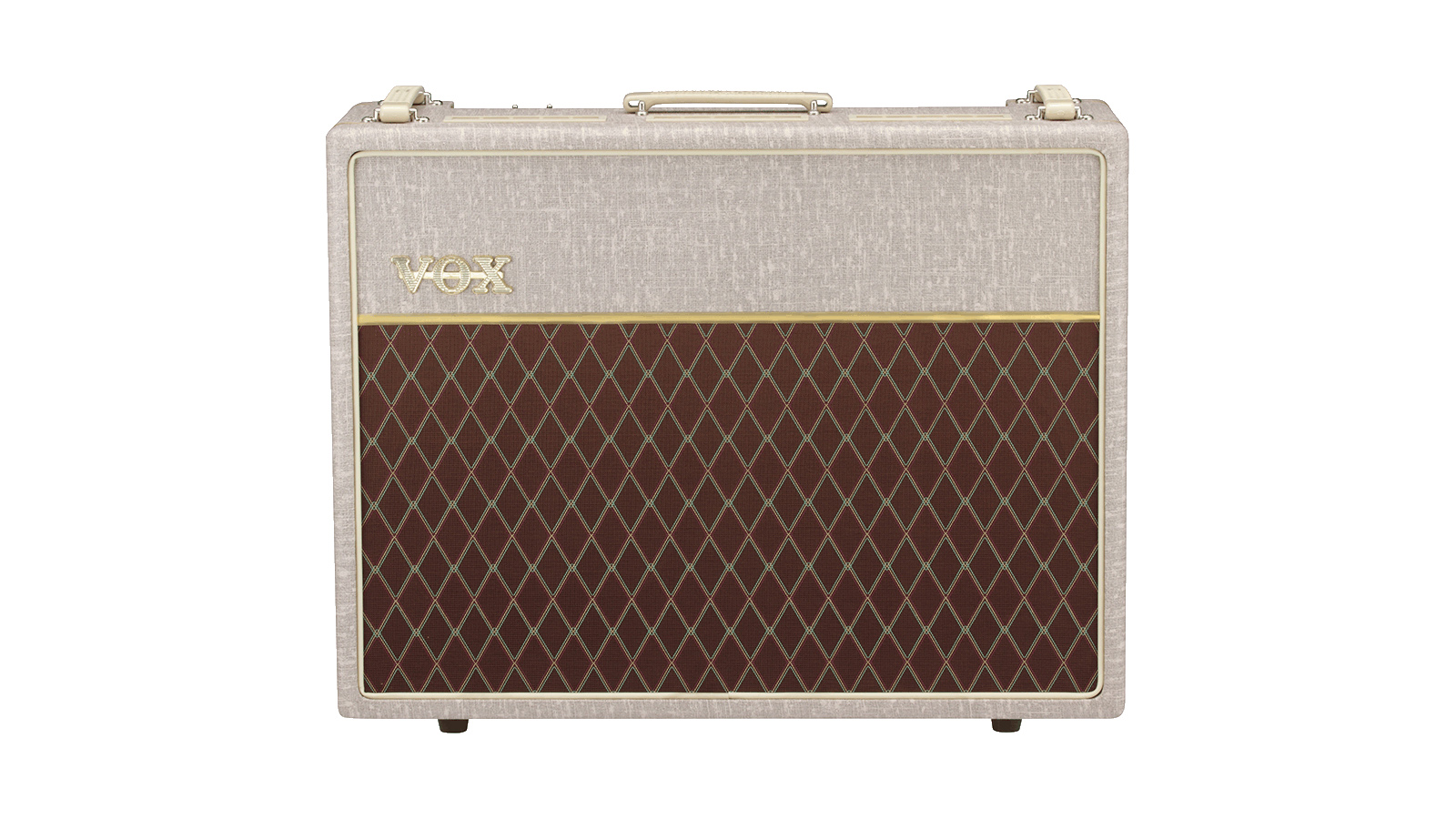
Reading through a list of AC30 users is like rattling through a Who'southward Who of contemporary music – The Beatles, the Stones, The Yardbirds, Rory Gallagher, The Edge, Brian May, Jonny Greenwood, Ed O'Brien, Noel Gallagher, Matt Bellamy, Tom DeLonge… Who hasn't played this thing?
The AC30's got a reputation for 2 things: unique tone and unparalleled volume. This is the sound that helped power The Shadows in the late '50s, the British Invasion of the mid-'60s, rock throughout the '70s and countless genres since.
We can thank a bespectacled Hank Marvin for the ear-splitting volumes this amp is capable of. In the late '50s, The Shadows' Vox AC15s were beingness drowned out by Cliff Richard'south screaming fans, so Hank asked for something a bit louder. Vox founder Thomas Jennings obliged in the shape of the AC30.
Vox has been through a lot of unlike owners since then, and there accept been countless iterations of the AC30 – some proficient, some bad. This item version, with its mitt wiring, Alnico speakers, Top Boost circuit and ECC83/EL84 tubes, tips a hat to the legendary early-'60s spec. Without spending an arm and a leg on an original, it's the closest you're currently going to get to the amps produced in the golden years of the AC30's history.
What defines that AC30 sound? Hank Marvin used one for its colorful, chimey-clean sound that's very unlike in graphic symbol to a sparkly Fender merely just equally enchanting. Rory Gallagher and Brian May rated the AC30 for its fat, polish, progressive overdrive. Everyone, information technology seems, loves the complex mids and classic crunch tones.
Vocalisation likewise sells a hand-wired version with Celestion G12M Greenback speakers for almost one-half the price, simply the Celestion Dejection will give you the most authentic tone. The cheaper-yet, not-mitt-wired 'Custom' versions also include reverb and tremolo, if this is important to yous.
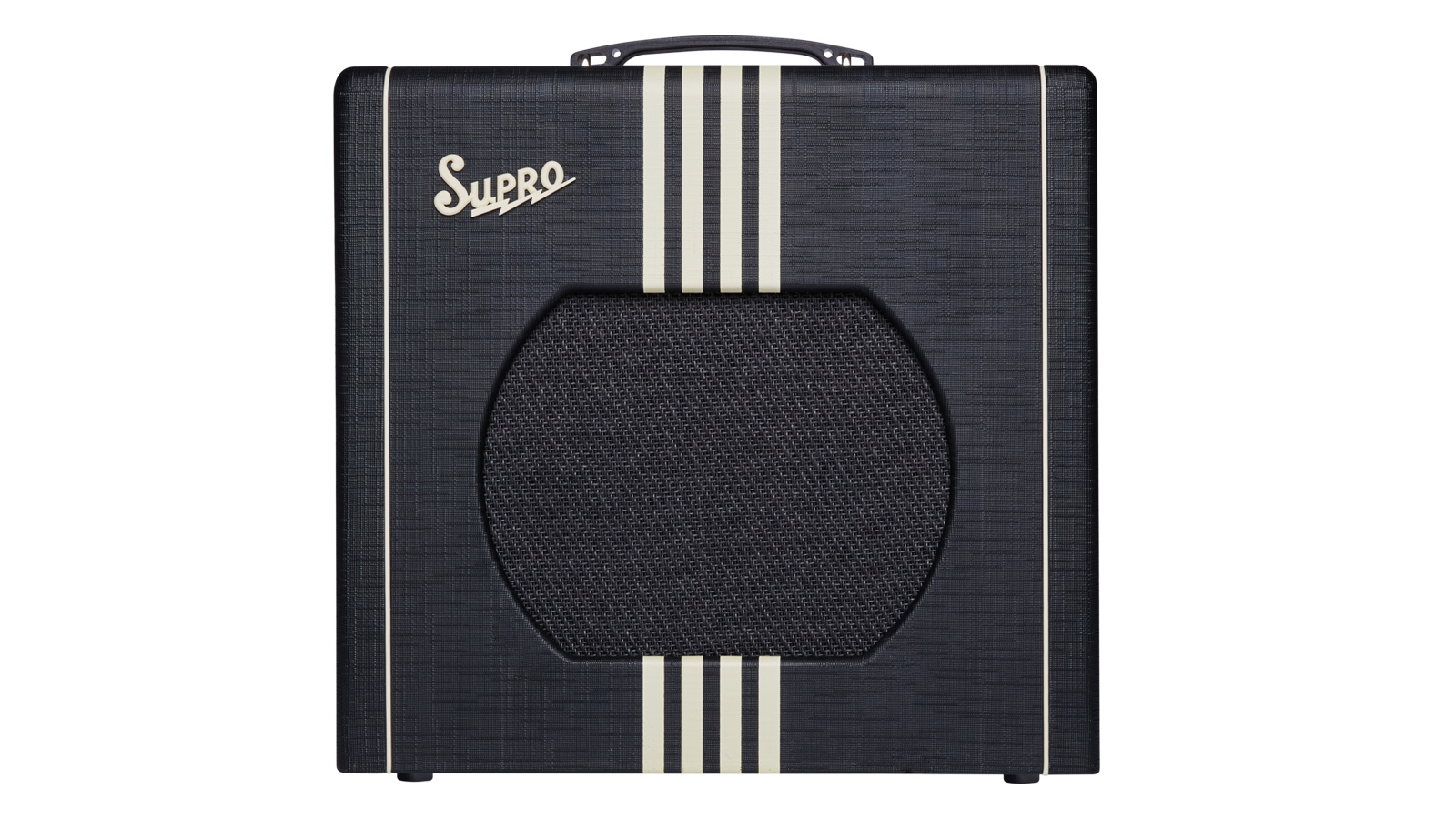
Back in the '50s and '60s, Supro amps really were stone 'n' roll royalty, defining the sound of a generation. This footling amp channels much of that vintage vibe, both in terms of tone and looks – its quirky appearance is lifted straight from those '50s gems, such as the Supro Chicago 51.
A quick glance at the specs reveals that the Delta King 12 is conspicuously a straight rival to the similarly retro-looking Fender Blues Junior 4. Both are small, straightforward 15W all-tube amplifiers with spring reverb and surprisingly affordable cost tags.
Engage the FET-driven heave and this footling amp really sings – it'due south hands loud plenty for rowdy pub gigs (there's a line out for larger venues). Call up the Pigtronix FAT gain excursion – Supro and Pigtronix are brand stablemates – to add a knee-deep covering of silky-smooth overdrive. Both features can be kicked in using the optional SF4 footswitch; it'southward just a shame that Supro didn't run across fit to bundle it in for free.
Even without the heave or drive, this little Delta King will pause up very pleasingly with enough input from your guitar's book knob and good playing dynamics. Back off, and the tone cleans up – only the manner a good tube amp should.
So, this or the Fender? Well, although the specs are similar, there are some key differences – aesthetics, power amp tubes, speaker, overdrive and and so on – so it really comes down to which voicing yous prefer and whether you can live with the appearance. United states of america? We'd be happy with either.
Read the full Supro Delta King 12 review

Fable has it that when a immature Eric Clapton mislaid his Marshall JTM45 in Hellenic republic, he asked Jim Marshall to design and build him a new combo amp, like in size to the Vocalisation AC30, and then that he could easily fit it in the kicking of his motorcar. Jim's solution was the open-backed 1962, which Eric used on many of his best-known tracks with John Mayall & the Bluesbreakers – hence the 'Bluesbreaker' suffix.
This particular version is part of Marshall'southward Vintage Reissues line, for those who "want to recreate nostalgic memories". Up until recently, in that location was a considerably more expensive hand-wired version, but that appears to accept been discontinued for now.
The sonic dazzler of the 1962 lies in the way that information technology breaks up under power. For a Marshall, it's a relatively clean amp with a crisp high-end response that, even when wound upwards to 11, won't fully distort into mush. Instead, you're rewarded with beautifully articulate saturation that appears early and progressively. Compression, sustain, warmth and vibrance – what more could you ask for?
Plainly, Eric used his at full chat on the Blues Breakers album, to elicit the feedback he required, but you can still hear his distinct playing cut through the mix like a hot knife through butter.
True to the original, this is a simple amp with tremolo, a handful of controls and little else in the style of features. Clearly, it'southward not an verbal reproduction of Eric's amp – the hand-wired version was much closer – only it'due south in the right ballpark. If you're looking for that Beano tone, information technology'southward a keen place to start – though it would be unfair to dove-pigsty it every bit a i-play a joke on wonder. The 1962 is a vintage-voiced, well-mannered amp that'll deliver across many genres.
An original will probably set you back five figures or more, making this a scrap of a bargain.
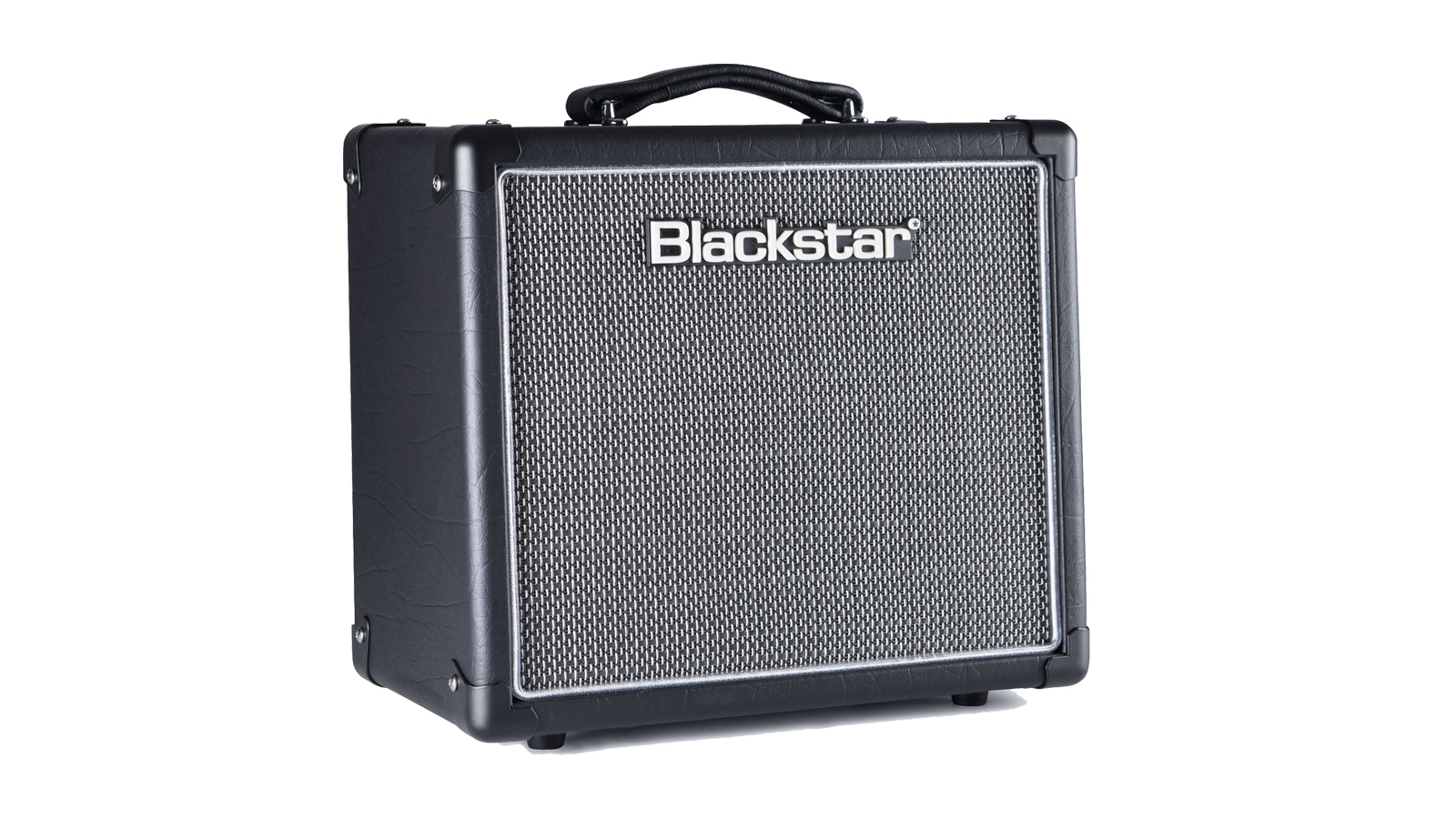
Blackstar'due south HT series of amplifiers took the guitar globe past storm on their release, with their low-wattage offerings catching the eyes of guitarists all over the globe. The original HT-ane and HT-1R were both fan favorites, so it's but right that the MKII is killer, also.
The HT-1R MKII carries over all of the best features of its predecessors. With one watt of all-tube power, information technology creates an nigh unstoppable amount of harmonically rich tonal bliss - something you'd struggle to look from a single viii" speaker bolted onto a two-tube amp department.
This amp is not but tonally impressive - the features which Blackstar has managed to incorporate into the HT-1R MKII make it a contender for the title of 'ultimate home amp'. Of course, nosotros're talking about the USB emulated output - which turns your HT-1R MKII into an audio interface, capturing and immortalising your all-tube tone.
Not too bad, eh? Well, for less than $350, it'southward marvellous.
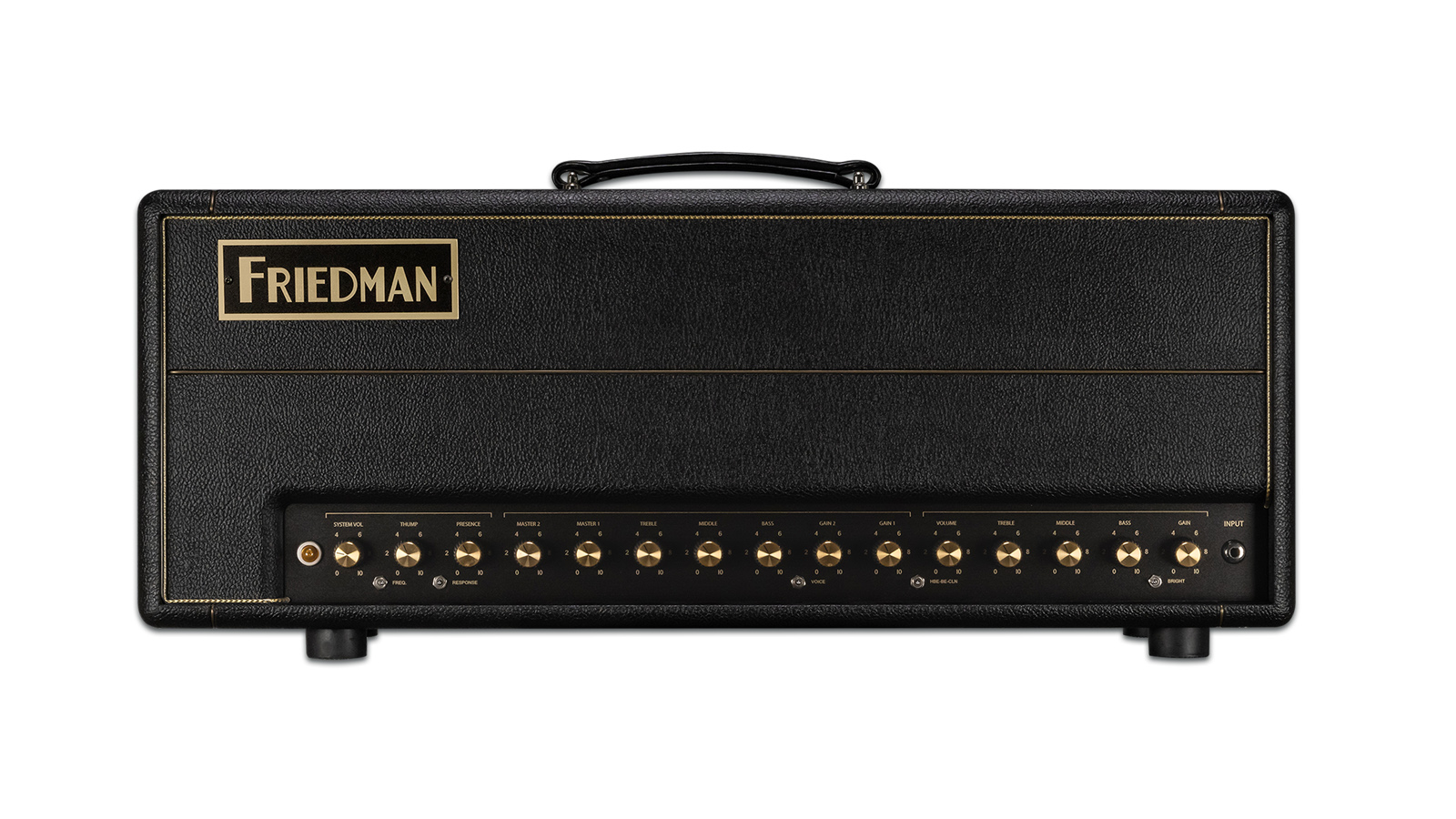
Dave Friedman cut his teeth in 1980s LA, piecing together rigs for California's biggest rock stars and session musicians. That experience, together with an instinctive feel for knowing what working musicians really require from their equipment, led him to modding and developing amps for the likes of Eddie Van Halen, Steve Stevens and Jerry Cantrell.
Information technology's fair to say that the culmination of all that knowledge is embedded in Friedman's flagship amp, the Exist-100 Palatial; a 3 aqueduct, 100W all-tube caput that'due south paw-wired in the US.
Like all Friedman amps, the BE-100 Palatial is inspired past the Marshall audio of the 1960s – more specifically, Dave'south favorite amp of that era, the 1968 JMP Plexi. The Friedman pattern takes that 'British sound' and modernizes it, non merely by adding more gain, but by figuring out how it's possible to go those outstanding driven tones at lower volumes.
The Be-100 Palatial has two overdrive channels, developed, we suspect, for those who drool uncontrollably at the prospect of high-gain crunch. The first channel, the Brownish Heart, is moderately driven, while retaining clarity and nuance. The 2d channel, the wonderfully named Hairy Chocolate-brown Eye, is properly driven and then some, but also remains beautifully clear. Each channel has its own proceeds and master controls, so you tin can fully explore one without influencing the other, and vice versa.
The tertiary channel, which is heavily influenced by that aforementioned Plexi tone, is borrowed from Friedman's acclaimed Smallbox amp. Lower in proceeds, it cleans up actually well, but delights in flaunting some Plexi-style dust when chosen upon to do and so. All three channels respond superbly to playing dynamics – noodling through the Be-100 Deluxe is a very tactile experience.
It's easy, and rather lazy, to typecast the BE-100 Deluxe as a gain monster. In fact, it's way more than versatile and capable than that. From 'Saturation Switch' to 'Thump Knob', this head is littered with useful tone-shaping tools that'll introduce yous to a massive gamut of usable sounds. The just obstacle for most of us will be the center-watering price. We tin can all dream…
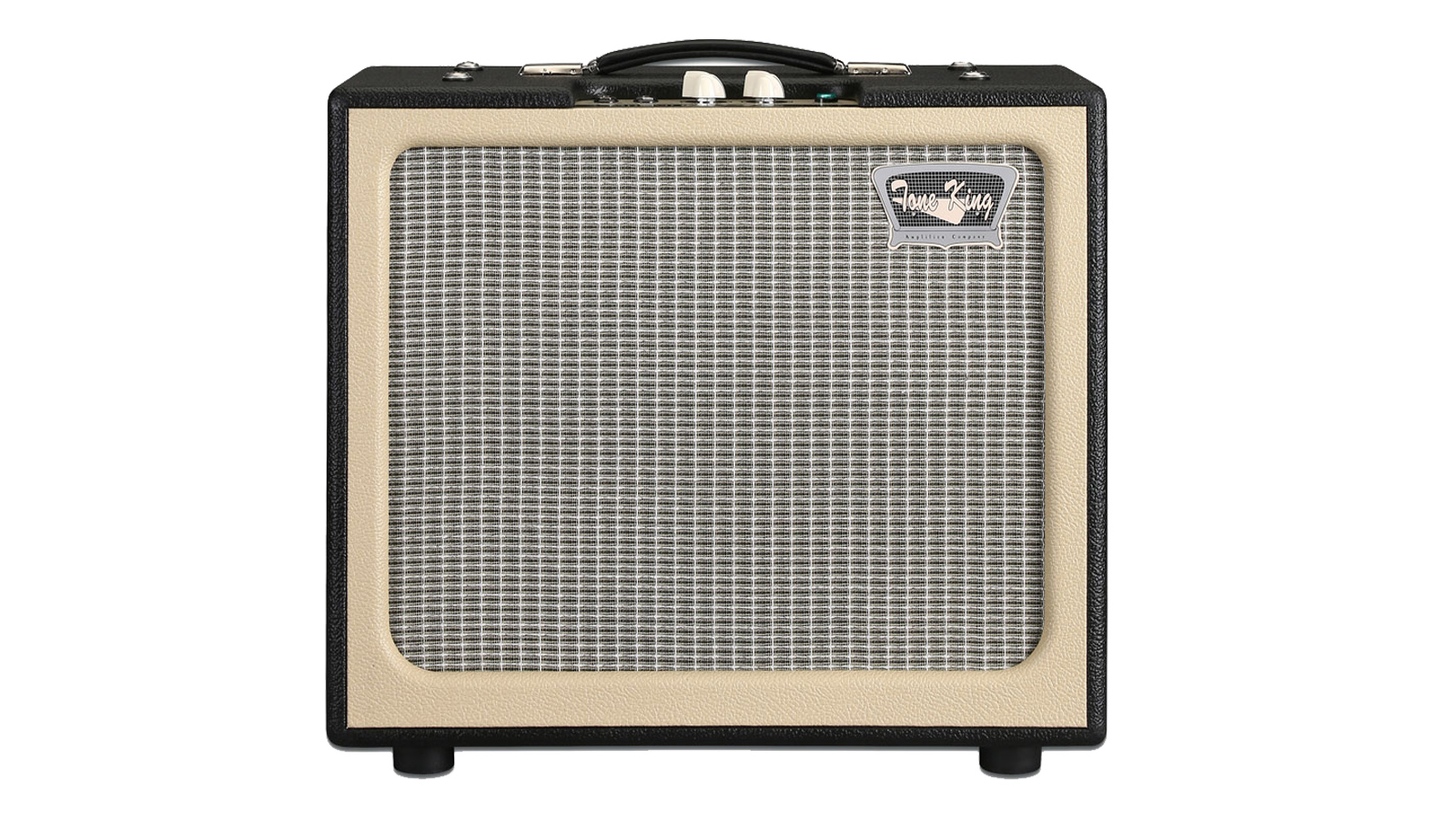
While we guitarists dearest nothing better than sitting at home in front of a cranked amp all 24-hour interval, it'due south probably safe to assume that family unit and neighbors rarely share the aforementioned level of enthusiasm. In fact, allow'due south be honest, playing a 30W tube amp at book – clean or driven – becomes pretty tiring for us, likewise, afterward a surprisingly brusque amount of fourth dimension.
That'due south where a small, low-wattage tube amp similar the Gremlin comes in. Like all Tone Male monarch amps, it rocks a goofy retro-futuristic artful, which we really charge per unit. If black is too somber for you, it's also available in Surf Green and a few other colors.
It's a really straightforward little amp based on a very simple premise – what if you could pack a vintage Fender Blackface and a Fender Tweed into the same little box? Plug your guitar into the Rhythm input and you've got Blackface tone at your fingertips, with bell-like highs and increased headroom. Plug into the Atomic number 82 input to discover more than distorted tones reminiscent of a driven Tweed amp. It's fifty-fifty possible to spring betwixt them or alloy the two channels with an optional A/B/Y switch.
Recognizing that fifty-fifty five watts tin can generate a meaning corporeality of volume, Tone King has equipped the Gremlin with its Ironman Two attenuator, which reduces volume even when the power amp is being fully driven. This preserves tone to an extent, despite the fact that the speaker won't be breaking up or compressing.
Controls are scant; there'southward only a rotary volume knob and a unmarried tone knob. Nevertheless, it'south like shooting fish in a barrel to achieve a myriad of tones with the Gremlin's two channels, and rather refreshing not to get bogged down in endless EQ options.
Although the Gremlin is a natural for home or studio use, the line out means it'due south quite possible to gig with it.

Marshall'southward Origin series of amps bring a vintage vibe to the market place without the price tag of an one-time Marshall. Their styling and blueprint is that of an former-school amp, merely each model brings mod touches and specifications to make life easy for the mod guitarist.
First of all, the Origin 20 contains 20W of all-tube power - not something to be sniffed at. This amp head, especially when going through a 4x12", can actually move some air - and that'southward why Marshall has included a power reduction feature to the Origin line. Bring this amp down to either 3W or 0.5W, and either crank it for some authentic tube overdrive or bask in the glory of your full-stack home practise amp.
The Origin series keeps EQ and other settings fairly sparse. In that location are still enough of clean and dirty tones yous can coax out of this amp, but the iii-ring EQ and Tilt control go along the bulk of your focus on the playing - and non and then much on the countless tone hunt.
The Origin series also includes and FX loop, enabling you to plow your vintage-inspired amp into a mod masterpiece. Where fourth dimension-based modulation effects may have muddied your tone in the by, the Origin handles information technology with ease.

The original Orange tone, from the late '60s and early '70s, was associated with the sonic plat du jour – dejection-tinged rock. Sadly, the make fell into the doldrums in the '80s, faring rather meliorate with the '90s Britpop scene. But past the early 2000s, modernistic high-gain metallic was inspiring the amp-buying public, forcing Orange to play catch-up.
The result was the Orange Rockerverb, a no-holds-barred metal amp that speedily became a favorite of Slipknot's Jim Root. Perfect for the genre, it took no prisoners!
The Rockerverb l MKIII is still a metal powerhouse, but over the years it'south matured into a more than rounded, multi-talented product. Virtually noticeably, there'southward much more headroom and the make clean channel has been revoiced for a crisper response that's yet warm but never murky.
The gain channel can yet dish the clay with the best of them, but even that cleans upwardly rather nicely when you want information technology to.
Using the switchable power output is another mode to shape your tone. At the full 50W, at that place'south acres and acres of headroom to play with. However, engage half-power mode and the power amp starts clipping more than readily, yielding more than attainable, smooth-saturated tones. It's inappreciably an sectional or ground-breaking feature, simply it'southward welcome nonetheless.
There's a pes-switchable attenuator onboard, also, meaning yous can creepo away to your heart's content, while keeping the volume at reasonable levels.
The Orange Rockerverb 50 MKIII is a mod classic that hasn't lost muscle tone or gained flab every bit it'southward matured. Instead, it'southward broadened its skillset.
Best tube amps: Buying advice

Choosing the best tube amp for you
Choosing a tube amp is a lot more straightforward than picking out a modernistic modeling amp, because purity and simplicity are our focus, rather than complexity. Every bit players of fine tube amps, nosotros're so heavily into authentic tone that merely the moving-picture show of a standby switch can send a tingle down our spine. Heaven is the warm glow of an EL84; the distinctive, faint hum of a valve-driven power section.
Of class, it would exist ridiculous to suggest that tone isn't of import when choosing a modeling amp. Brands such every bit Kemper, HeadRush, Line 6, Boss and Fractal have taken modeling then far in recent decades that their impressive boxes, laden with DSP firepower, are a force to exist reckoned with. They sound incredible, offer a dizzying array of emulations and effects, and are far more convenient to use than tube amps in many circumstances.
For some of usa, though, they offer too much option. The bewildering number of available amp models, furnishings, routings and settings hampers our creativity rather than feeding it. If sculpting our tone involves scrolling through multiple mile-long menus, aren't we in danger of losing sight of what we're trying to achieve in the showtime identify? Namely, making music?
Brian Eno in one case maintained that endless possibilities stifle creativity. His solution was to "confine people to a pocket-sized area of maneuver". Every bit it happens, tube amps provide plenty scope for maneuver, but as creative tools they're very manageable. And for the purists amongst us, they're real.
Choosing the right one for you still requires a little knowledge, and so here's our guide to what to look out for.
Choosing the right wattage
The outset thing nearly guitarists consider when starting on their amp-buying journey is how loud they want their guitar-playing to be. Then they'll start looking at wattage figures because, well, that's how the industry groups its products.
The problem is that the wattage won't accurately tell you lot how loud an amp is, or what sort of volumes it can attain. That's partly because both volume and loudness are imprecise, subjective terms – if you lot think nearly it, nosotros all perceive loudness differently.
Nosotros could take a look at things like sound-pressure levels and decibels (dB), and quote often-repeated facts such as: On a logarithmic scale, the barely audible is 0dB, a sound x times louder is 10dB, while a sound 100 times louder is – wait for it – 20dB. But none of this is useful if the only figure we accept to keep is wattage.
Our brains do perceive tube amps to be louder than solid-land amps, due to the fashion they break upward and compress differently. Similarly, nosotros likewise perceive distorted sounds to be louder than clean sounds. Our ears are also much less sensitive to depression and high frequencies, which is why bass amps tend to be much more powerful than guitar amps.
In fact, this miracle becomes fifty-fifty more marked at low volumes, which is why home hifi systems often have a 'loudness' button to boost bass and treble frequencies when we're listening at neighbor-friendly levels. This is relevant, because if you turn a guitar amp that'due south not been voiced for low volume levels fashion down, y'all may find that almost of your tone disappears.
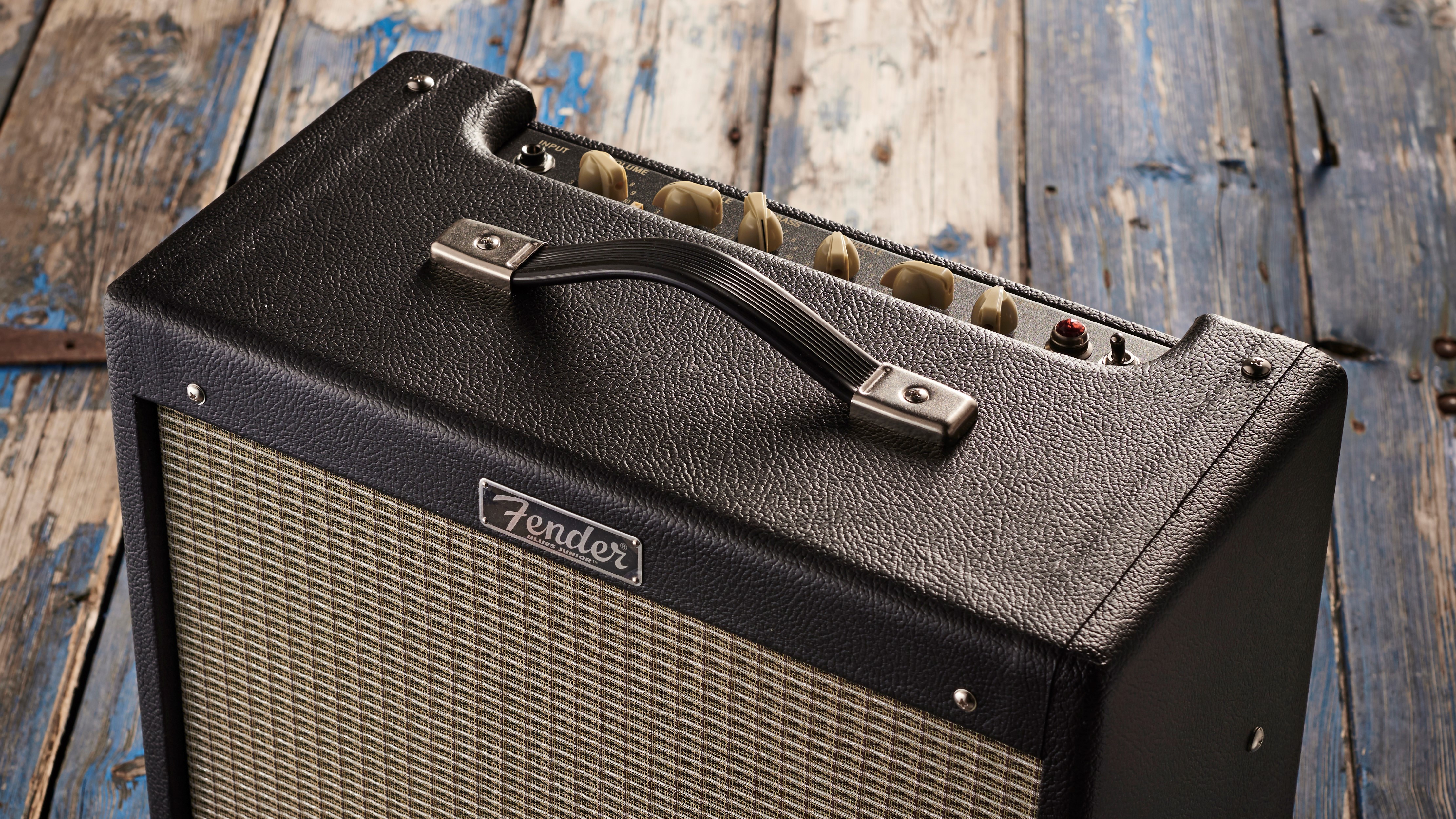
To complicate matters even further, speaker size, number, impedance and efficiency have a huge part to play in how loud an amp sounds. As does room size, considering a large amp in a small-scale bedroom volition e'er sound louder than it does on a large stage.
Nosotros wish there was a more precise manner to predict the volume of your new tube amp but, for the reasons explained higher up, the vague notion of volume as a product of wattage is normally all we have. And so, here'south a crude guide to what's watt. Just accept our recommendations with a compression of common salt – for example, the Vox AC30 is famously loud for a 30W amp.
1 – 3 watts
This is bedroom-volume territory. A 1W amp will still be surprisingly loud simply will break upward quite chop-chop. And then, if you're looking for clean tones, y'all may be better off with a more powerful amp with more headroom.
5 – fifteen watts
These are amps that'll go on up with a well-mannered drummer in a modest-sized room. They tin be miked up for louder bandmates in larger venues, and they're also perfect for providing plenty of clean headroom at bedroom-level volumes.
20 – 40 watts
A real sweetness spot for gigging in pubs and clubs. In that location'south usually more than plenty clean headroom, plus the facility to produce ability-amp distortion at higher volumes. Many amps this size also have attenuators that'll reduce their book by half, putting saturated tones within easier reach.
fifty – 90 watts
Plenty of clean headroom for jazz, also as genres where the signature sound relies on preamp distortion.
100 watts and higher up
In recent years, these giant stacks of power have been replaced by smaller amps miked upward and played through e'er more sophisticated PAs. But some bands rely on the unique sound of a driven stack – there's nothing quite like it.
Tube types explained

Every amp model has a unique vox that's influenced past 101 things, including excursion design, speaker option then on. One ingredient that has a sizeable impact on the season of the overall tone is the type of tube or tubes that have been specified, particularly in the ability amp section.
Hither's a quick run-through of some of the most popular vacuum tube types and their tonal characteristics. Often, there are sub-types or variations of these tubes that provide subtle (and not so subtle) variations in tone.
Preamp tubes
12AX7 – the most popular preamp tube past far, the 12AX7 dominates the market. It emits low noise, has a high amplification gene and is easy to drive into pleasing distortion. It's fitted to most everything, but there are alternatives – such as the 12AU7, which offers lower gain.
Power amp tubes
6V6 – you'll often find this in pocket-sized US combos. It'southward bully for deep bass and shimmering highs, so we're talking things similar Fender's Champ, Princeton and Deluxe amps. Information technology'll distort, too, and then it'due south useful across a wide diversity of musical genres.
EL84 – this delivers a beautifully saturated bulldoze sound with a chiming pinnacle finish, evocative of the British Invasion. Recall Vox AC30.
KT66 – this provides little baloney, so it's perfect for clean sounds. Information technology's also establish in loftier-gain amps where all of the baloney is designed to come from the preamp. Think Marshall JTM45/Bluesbreaker.
6L6/6L6GC – another favorite in US amps, which utilise it to produce fat, resonant mids and sparkly highs. A relative of the KT66, it's a very popular tube used by Fender, Marshall, Mesa/Boogie and many others.
EL34 – British in flavour, the EL34 produces wonderful mid-to-high-range projection. It has a bell-like clarity and a crushing mid-range crunch. The EL34 reacts especially well to playing dynamics. Think Vox, Hiwatt, Orange and Marshall.
Other uses for tubes
Tubes are likewise used in rectifiers and reverb. Rectifiers almost usually use the GZ34 tube, while reverb units volition use a 12AX7 or a 12AT7.
Tubes used to be found in many kinds of electronic appliances, but in most products they were made obsolete by solid-state alternatives decades ago. This has reduced the demand for tubes dramatically, and they're now simply made in certain parts of the world, such equally China, Russia and Slovakia. Quality tin can vary from very skillful to rather poor, so buy advisedly.
Can y'all swap one kind of tube for another to become a dissimilar sound? Some amp brands actively encourage experimentation; others are adamant that yous shouldn't do it. Refer to your amp'southward manual or seek advice from your local amp dealer.
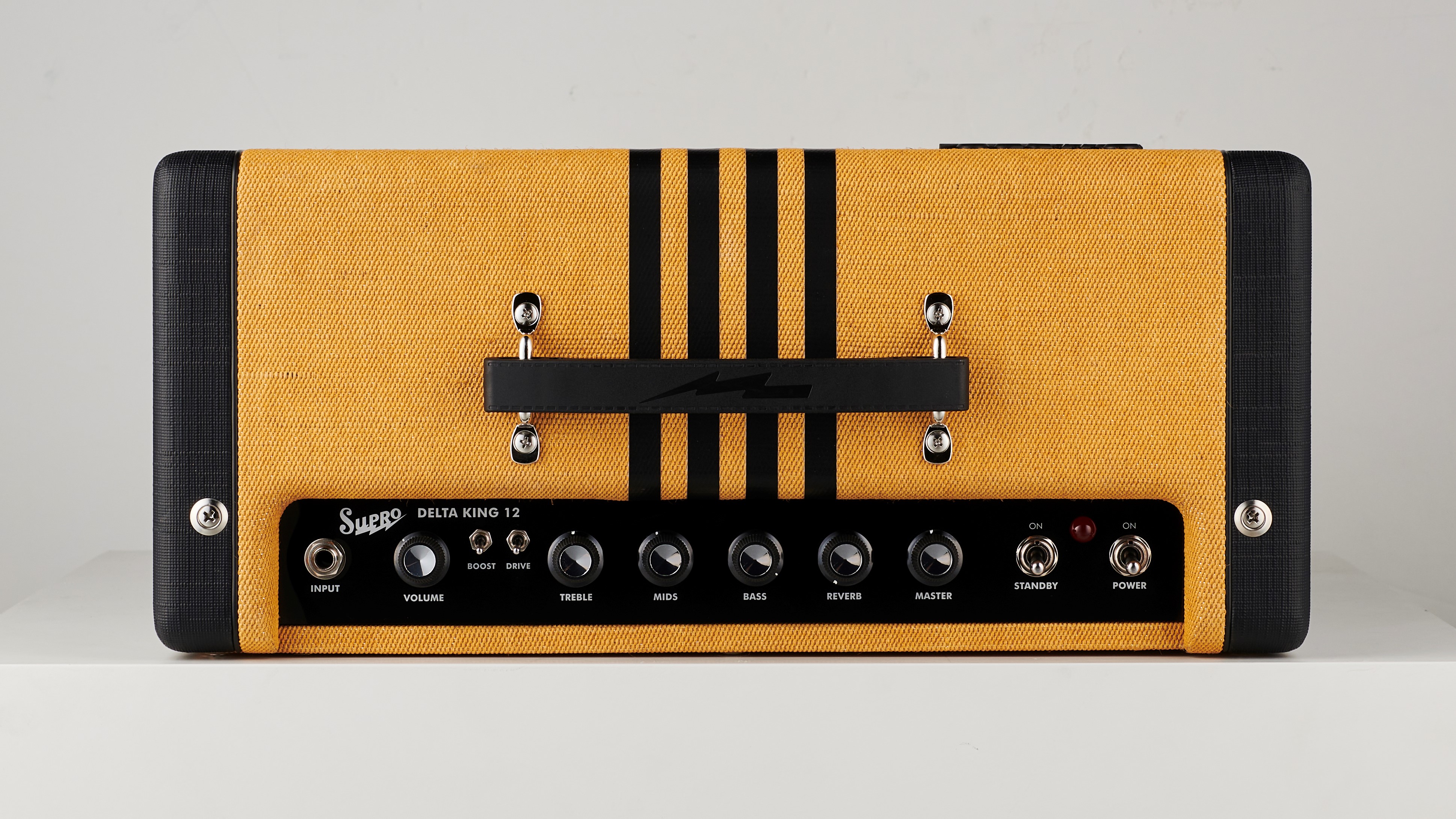
Preamp baloney vs power amp distortion
Preamp distortion typically sounds smooth and compressed, assuasive for increased sustain at lower volumes. In contrast, power amp distortion sounds less compressed and a lot punchier in the mids. It besides tends to react more than to playing dynamics.
So how do you know which is which? If your amp, or potential amp, has a principal volume, and then turn this down low merely go along the gain upward high. That's preamp distortion y'all're hearing. Your amp'due south EQ controls, bass, heart, treble so on influence the preamp, which gives you lots of saturated tone shaping opportunities.
At present try the opposite; proceed the proceeds lowish merely ramp up the master book (or just your amp's volume if there'due south no master). You're at present hearing power amp distortion. Power amps rarely have EQ controls, and driving them to distortion usually results in ear-splitting volume levels. This, however, is the manner guitarists in the '50s, '60s and '70s used to get their driven tones.
Modern amps tend to have pretty make clean power amps, with all the distortion duties assigned to the preamp. If, notwithstanding, you like playing with power amp distortion, and then buy yourself a lower-wattage amp then that you can become the power department to bulldoze more hands.
Will you be using your amp home or away?
If y'all're a gigging musician, don't underestimate how bulky or heavy some of the more powerful amps are. One reason that modeling boxes and floor units take proved so popular is that their meaty size and depression weight make them easier to live with.
On a similar note, if you're a bedchamber player (nothing wrong with that), call up advisedly before investing in a big, powerful amp on the basis that it's the 1 your favorite guitar hero used or uses. Information technology'southward true that some can exist attenuated, but near likely you'll just finish up with an amp that'due south leap to upset the neighbors.
A great compromise is to get a much smaller amp (the attenuated Tone Male monarch Gremlin, for example) that has a line out. You can and so play at dwelling to your heart'south content but also hook it up to the business firm PA when gigging. No more back pain loading information technology into the van, either.
Head or combo?
Both take their advantages. Combos are convenient for nigh players, because they're more compact than a stack (a head teamed up with its cab), significant they're easier to just pick up and run with. That said, split a stack for transportation and the individual parts may well exist lighter to comport to the van than a big combo amp. Also, many mod heads will characteristic line outs that tin be hooked up to a PA, so y'all may not even need a cab.
Stacks sound crawly. Mick Ronson was just one of a number of incredible guitarists in the '70s whose tone relied on a Marshall stack turned upward to 11. Four speakers are e'er going to sound different to two, but these big cabs also put the sound closer to the guitarist'due south ears, rather than downward by their knees.
Cabinets can also provide more book, only most combos these days can bulldoze a cab through their speaker out jacks.
Combos sound just equally their maker intended. A combo's components will have been carefully selected to piece of work harmoniously together. In contrast, provided the impedance is right, y'all can connect a head upward to whatever old cab, which may audio less than optimal.
On the flip side, if yous enjoy exploring the sonic possibilities of new equipment (aka GAS), investing in a decent cab and multiple heads may be cheaper than collecting lots of individual combos. They'll take upward less room, likewise.
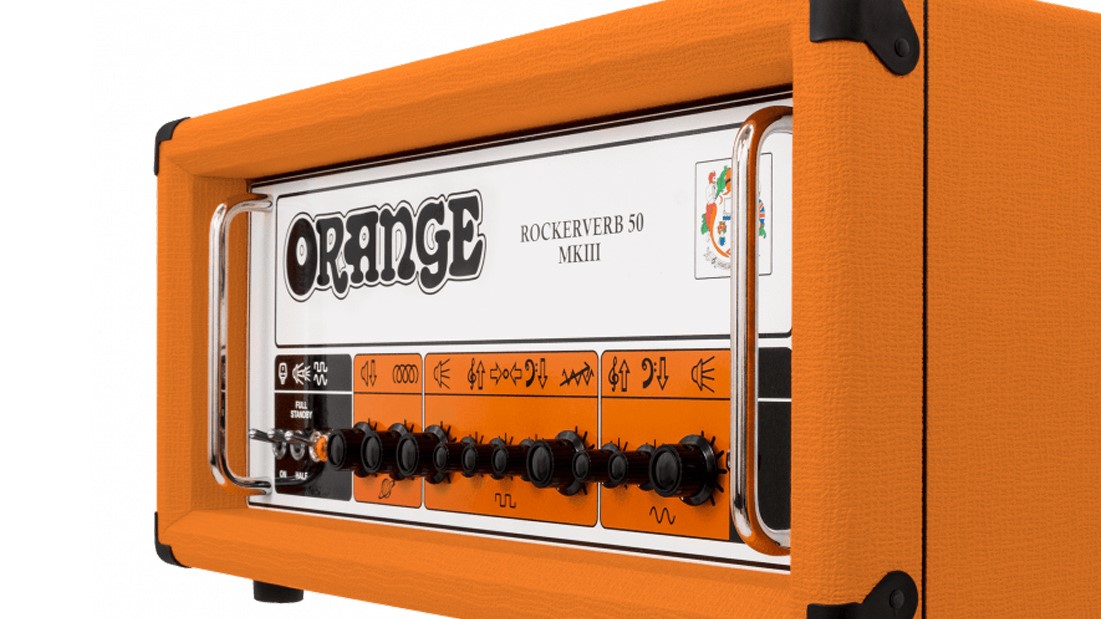
Speaker choice
Speaker choice makes a central deviation to the sound of a philharmonic or cabinet. There are scores of models – too many to mention hither – from vintage reissue to high-tech modern. Some amp designers volition even get as far as to fit mismatched speakers in a multi-speaker cabinet to achieve a singled-out audio. Pop brands include Jensen, Celestion, Eminence, Electro-Voice and JBL.
As a very rough guide, modern speakers designed for high-gain genres have a tighter response, with more clarity and bottom-end solidity, than vintage speakers, which tend to audio more 'characterful'.
If you're looking for a cab to work with your amp head, or vice versa, just be sure that the power ratings and impedances are compatible.
Manus wiring vs PCB
Fashion back when, all amps were hand-wired, and popular lore has it that they all sounded fabulous. Then printed circuit boards came along and now everything sounds dire. Only kidding!
Well-nigh of u.s. take a romantic view of the benefits of hand-wired amps. Subsequently all, Pete, Jimi, Mick, Jeff, Jimmy and Eric would all take played paw-wired amps exclusively dorsum and so.
Hand-wiring as well lends that boutique, artisanal vibe that makes us feel far more than comfortable when handing over a large wedge of cash – we experience a fleck short-inverse when retro reissues sport PCBs. Point-to-betoken wiring besides looks more beautiful than a soulless circuit board.
Does hand wiring sound improve? The jury's out on that one, because both methods of construction can sound superb.
Is it more reliable? If you're on a world tour, often bouncing an amp effectually in the concur of a long-haul aircraft, then PCBs are probably the way to go.
Will mitt-wired amps last longer? It'south hoped that new legislation will force brands to stock spares for at to the lowest degree x years, so your PCB amp should exist around in the medium term at to the lowest degree. Nonetheless, hand-wired amps should exist hither for as long as somebody keeps selling soldering irons.
Information technology'south not unusual for brands to take a hybrid approach, manus-wiring some disquisitional parts but using circuit boards for the rest.
What is an effects loop?
Most mod tube amps will feature an effects loop, which is a handy feature to have if y'all're using filibuster, reverb and modulation pedals.
Past plugging these kinds of effects into an effects loop, you're removing them from the front of your signal chain and replacing them betwixt the preamp and the power amp. This means that they aren't negatively influencing the preamp distortion, giving you more than control and your resulting tone more than clarity.
Fuzz and overdrive pedals aren't such a business, and are usually best left at the outset of your signal chain. Effects loops are a 'prissy-to-accept' characteristic, rather than a must.

What do these $.25 do?
When looking for an amp, y'all may come up across terminology that's readily banded nigh simply rarely explained. Don't worry, we've got your back.
Rectifier: A rectifier converts AC voltage into the high DC voltage that your amplifier's valves need in order to operate. In vintage amps these were valve-driven, but most mod amps now use solid-state rectifiers because they are more reliable and more efficient.
However, purists maintain that valve rectifiers help amplifiers to sound more compressed, loose and organic.
Multiple rectifiers – dual, triple and then on – are used to increment wattage/ability. They sound cooler in marketing materials, as well.
Bias: In a nutshell, going through the process of biasing your amp will enable the power amp tubes to run optimally. You'll hear better tone and benefit from longer tube life. Depending on the amp, biasing may be recommended every time y'all change the tubes or but if you determine to fit ones with a dissimilar specification.
A quick word of alert: the process can be dangerous if you don't know what y'all're doing, and then information technology may exist all-time left to your friendly guitar technician.
Plexi: Don't worry, plexi isn't a technical term at all. It originates from the series of amps that Marshall built in the '60s that featured Plexiglas panels – nearly notably the 1959 Super Lead. Since then, it'due south been used to describe said amps – or, more generically, the characteristic Marshall sound from that period.
It'due south a class matter
Amp manufacturers will oftentimes proudly publish amplifier class designations in their marketing specs, so it'southward useful to have some insight into what they mean. We've simplified the explanations somewhat for brevity!
You'd recall that Class A amplifiers would exist the all-time of the best, wouldn't you? In fact, in Course A amps, the power valves are working all the time, which makes the amp very inefficient and less able to produce ability. That said, they're favored for their sensitivity to touch and playing dynamics.
In Class B amps, the valves get to take a rest for half the fourth dimension. The effect of this is that they're much more efficient and can produce more than power. However, the unusual way in which Course B delivers power and distortion isn't well suited to guitar amplifiers, and so you lot won't e'er see them.
Class AB amplifiers are a mix of the two technologies, blending some of the dynamic playing characteristics of Class A with the power of Class B. Grade AB amps are said to exist punchier with firmer lows.
Which is meliorate? Despite what many people believe, these form ratings are not indicative of quality. They're only technical terms to draw how a power section works, that's all.
1 matter nosotros tin can be sure of is that all tube amps are in a class of their ain.
- Check out the all-time upkeep guitar amps under $500
- Looking for a lefty? Hither is our pick of the all-time left-handed guitars
- Or the all-time desktop guitar amps for when infinite is at a premium
- Get lost in tone-land with the best amp modelers
- Or grab one of the best guitar amps under $one,000
- Become a killer blues tone with the all-time dejection amps
- Explore more Fender with the best Fender amps

Thank you lot for reading v articles this calendar month*
Join at present for unlimited access
The states pricing $iii.99 per month or $39.00 per yr
U.k. pricing £2.99 per month or £29.00 per year
Europe pricing €iii.49 per calendar month or €34.00 per yr
*Read five free articles per calendar month without a subscription

Bring together now for unlimited access
Prices from £2.99/$3.99/€3.49
Source: https://www.guitarworld.com/features/best-tube-amps
0 Response to "Never Pay Full Price Again Tone King"
Post a Comment